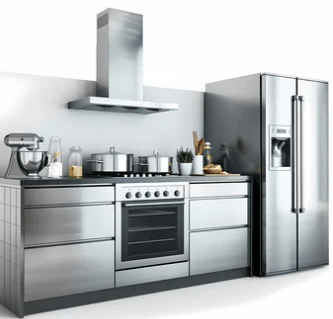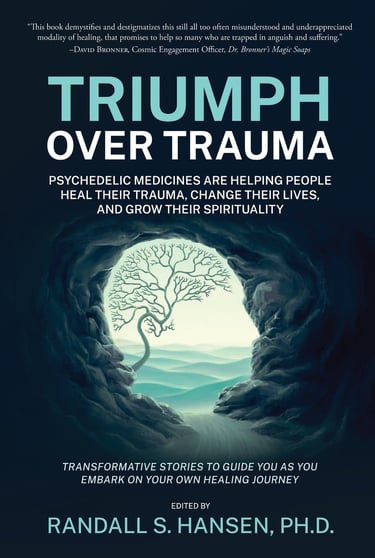Tips for Creating a Wellness Kitchen
The kitchen used to be the centerpiece and gathering spot in our homes, but it has been replaced with the family room. It’s time for a wellness kitchen movement. Learn how.
How’s your kitchen doing? Weird question, right? But the question is at the heart of this article as well as the belief that when a kitchen is functioning well, so should the person(s) using it.
Fewer and fewer people are actually using their kitchens for scratch cooking; the majority of people use their kitchen as a warming/heating station. Many people still use their microwave ovens and some use their ovens, but the rest bypass the kitchen for dining out or dining in with fast food and takeout.
So, how is your kitchen? If you want to use your kitchen more, if you want to make more and healthier foods at home, then you need to create a wellness kitchen, which is the premise of the rest of this article.
What to Incorporate Into a Wellness Kitchen
Proper cookware. If you still are using “non-stick” (but toxic) cookware, your first step is upgrading it to much safer (and healthier) options. Older and conventional non-stick cookware is often coated in forever chemicals of a class called obesogens, which collect in our organs and interfere with your metabolism and hormonal system. Clean cookware includes glass, stainless steel, carbon steel, enamel-coated cast iron, ceramic and ceramic-coated cookware. For example, in my kitchen, we use only glass and ceramic-coated cookware.
Healthy recipe stash. I have found or developed a list of about 20 dinner recipes that I can mix and match for weeks on end, but I also am always on the lookout for new, fun, healthy, and easy recipes. I love cooking, but don’t want to be in the kitchen for hours, so I focus on recipes that can be prepped and cooked in about an hour or less. (Exceptions include roasts, stews, etc.) Whether you are vegan or carnivore or something in between, there are many healthy scratch cooking options. Follow this link for a list of some of my favorite healthy recipes.
Clean, filtered water. Don’t be shocked by this tip, especially if you think your water source is healthy. In fact, most municipal water supplies have numerous potentially dangerous chemicals that are added to the water, including fluoride. Please use the Environmental Working Group's comprehensive Tap Water Database to check on your water supply. (The majority of tap water in the U.S. meets the “legal” limits for contaminants allowed by the federal government, but note that legal does not mean safe.) We use a Big Berkey filter because we consume so much water, but a highly-recommended smaller one for your refrigerator is Epic Water Filters Pitcher.
Real and local foods. It’s time to stop the endless supply of ultra-processed foods coming into your home, including frozen pizzas and meals, cereals, condiments, sauces, juices, sodas, energy drinks, and sweet desserts. Your shopping list, which ideally includes a stop at a local farmers market or co-op, needs to contain mostly real foods – veggies, fruits, meats, and fish -- depending upon your diet/lifestyle. Buying local foods not only guarantees you some of the freshest food, but also supports a vibrant farming community (which is essential to a healthy community). Ideally, all your food will come from organic and regenerative sources, but that’s not always financially or logistically possible, so do your best. See this list to understand why you should try to buy organic for some of the most pesticide-contaminated foods.
Indoor edible plants (herbs and spices). Plants brighten and enliven homes, but instead of buying another spider or snake plant, why not invest in growing some herbs and spices… or even some spinach or tomatoes? While you can easily purchase most spices and herbs in jars for your pantry, nothing beats the freshness of picking what you need from your living plant. My healthy kitchen garden includes bay, rosemary, thyme, chives, oregano, basil, cilantro, dill, lemongrass, and sage. Of course, in warmer months, if you can, try also growing favorite vegetables outdoors. (Find ideas in this article.)
Family and friends. The kitchen used to be the central hub of the home, a place where people gathered for uplifting conversations and healthy meals. Today, the hub of the house has moved to the family room, a location most used for watching mindless viewing from a large screen while we mindlessly eat meals and snacks and ignore having conversations. Let’s bring back the kitchen and the big kitchen table around which people can sit and connect – with each other and with healthy cooking.
What to Eliminate From a Wellness Kitchen
Ultra-processed foods. Most food is processed, but the avalanche of foods in the past four decades that have become ultra-processed is what has destroyed our health – and continues to do so. For true wellness, you must begin eliminating the vast majority of these “convenience” goods that dominate our grocery stores. The three key factors that are a hallmark of ultra-processed foods are: added refined sugars, the use of “vegetable” seed oils, and the extreme use of chemicals (for flavoring, coloring, texturing, and preserving). Read more in my article, Are Ultra-Processed Foods Killing You?
All refined sugar. On average, we are consuming more than 100 pounds of refined sugar a year; that’s not including the amount of natural sugars found in foods. Please eliminate the white sugar, brown sugar, corn syrup, maple syrup, and honey. Our bodies simply are not designed to handle the amount of sugars we are ingesting, leading to liver and gut issues, weight gain, brain fog, and chronic health issues. If you desire a bit of sweetness for your coffee or tea, consider using stevia (an herb) or allulose (a naturally occurring sugar found at low levels in figs, raisins, and molasses). Please also avoid the traditional sugar substitutes in the yellow, blue, and pink packets. See my article, The Deadly Truth About Our Sugar Addiction.
Vegetable seed oils. Maybe the biggest trick played on consumers is the vast amount of seed oils we consume – because these oils were originally designed for industrial purposes, not for cooking and baking. Time to toss out the corn, soy, canola, sunflower, safflower, and vegetable oils. Instead, use pure avocado or olive oil. Coconut oil is another good option. Personally, my kitchen is stocked with those oils, as well as butter from grassfed cows. Seed oils not only upset our omega-3 to omega-6 balance, but they also are linked to chronic inflammation, a root cause for many chronic health issues.
Sugary beverages. A big chunk of daily sugar consumption comes from beverages, including sodas, fruit juices, energy drinks, electrolyte beverages, coffee/tea drinks, and “nutritional” beverages. While it is important to stay hydrated, we do not need to be consuming as much sugar and other ingredients when water is sufficient. Other options include drinks not sweetened with sugars, including homemade green tea, coffee, electrolytes, smoothies, protein shakes, kombucha, coconut water, and bone broth.
White flour. There are several problems with white flour, the first of which is that it comes from a hybrid wheat that is grown for profit, not taste. That wheat is also grown showered heavily in glyphosate (brand name Roundup), a known carcinogen and obesogen. Once harvested, the wheat is then bleached, removing all the natural nutrients. As the processing finishes, chemical nutrients are often added back to “enrich” the flour. The flour also contains gluten, which is an irritant and health hazard for some. Finally, wheat flour is a refined carbohydrate that has negative effects on blood sugar.
Unhealthy snacks. Just about any snack found in a package should be eliminated, including both sweet and savory items. Ditch the chips, pretzels, popcorn, crackers, trail mix, cookies, cakes, and chocolates. Most of these products are considered ultra-processed and/or with ingredients conventionally raised with pesticides and herbicides. Focus instead on healthy snacks, such as raw, roasted, salted nuts and seeds, which are also a great source of fiber. Other healthy snacks include vegetables and fruits (in limited quantities because of the fructose); one example is baked and salted kale chips.
Final Thoughts on Creating a Wellness Kitchen
One of the cornerstones of the Healing Revolution and the Healing Revolution Diet is that the kitchen should be the main source of food and wellness for you and your family. It should be an inviting and happy place where people come together to cook, eat, and savor healthy foods.
Unfortunately, your tastebuds have been hijacked by all the ultra-processed foods, sugary drinks, and sweet desserts and snacks. The good news is that after several weeks on a real food diet, your tastebuds will slowly return to normal – and you will not feel so compelled to need sickening sweet foods.
Another aspect of a wellness kitchen is the use of only natural and safe cleaning products, instead of all the ones with all the toxic chemicals. You can make many simple cleaners (using items like vinegar, baking soda) as well as support natural brands (such as Seventh Generation, Dr. Bronner’s, ECOS).
Finally, if possible, part of your wellness kitchen should also include composting and a reduction of food waste going to the landfill.
Other Expert Wellness Resources
Are Ultra-Processed Foods Killing You? Learn everything you ever wanted to know about ultra-processed foods and their impact on health and lifespan.
Change Your Grocery Shopping and SAVE Your Life. Learn about hyperpalatable, ultra-processed foods, which use the savory-sweet-fat combination to overstimulate our brains.
The Deadly Truth About Our Sugar Addiction. We are culturally addicted to sugar… refined sugar. Sugar is pervasive in our culture. Every holiday is a sugar holiday, with specialized candies, cakes, cookies. Learn more.
Diets Don’t Work… and Other Truths About Food. Dieting – the idea of restricting foods – does not work, and often leads to increased weight gain after any initial weight loss.
50 Things You Can Start Doing Today to Improve Your Health -- discover 50 things you can start today for your health.
For Good Health, Please Consume (More) Fiber! Fewer than 1 in 10 Americans are getting enough fiber in our diets. Learn how to consume more fiber.
Keys to Truly Understanding Food Labels. Food labels are designed to mislead. This article informs consumers how to read food labels, what items to review, more.
Purge Your Pantry For Health and Healing. Don't let food marketers trick you. Most of the food sold in supermarkets is literally unhealthy junk food. Purge your pantry!


Dr. Randall Hansen is an advocate, educator, mentor, ethicist, and thought-leader... helping the world heal from past trauma. He is founder and CEO of EmpoweringSites.com, a network of empowering and transformative Websites, including EmpoweringAdvice.com.
He is the author of the groundbreaking Triumph Over Trauma: Psychedelic Medicines are Helping People Heal Their Trauma, Change Their Lives, and Grow Their Spirituality and the well-received HEAL! Wholeistic Practices to Help Clear Your Trauma, Heal Yourself, and Live Your Best Life.
His latest book is a true game-changer: The HEALing Revolution Diet: A Science-based Approach to Heal Your Gut, Reverse Chronic Illnesses, Lose Weight, Clear Your Mind, and Increase Longevity.
Dr. Hansen's focus and advocacy center around true healing ... healing that results in being able to live an authentic life filled with peace, joy, love. Learn more by visiting his personal Website, RandallSHansen.com. You can also check out Dr. Randall Hansen on LinkedIn.






